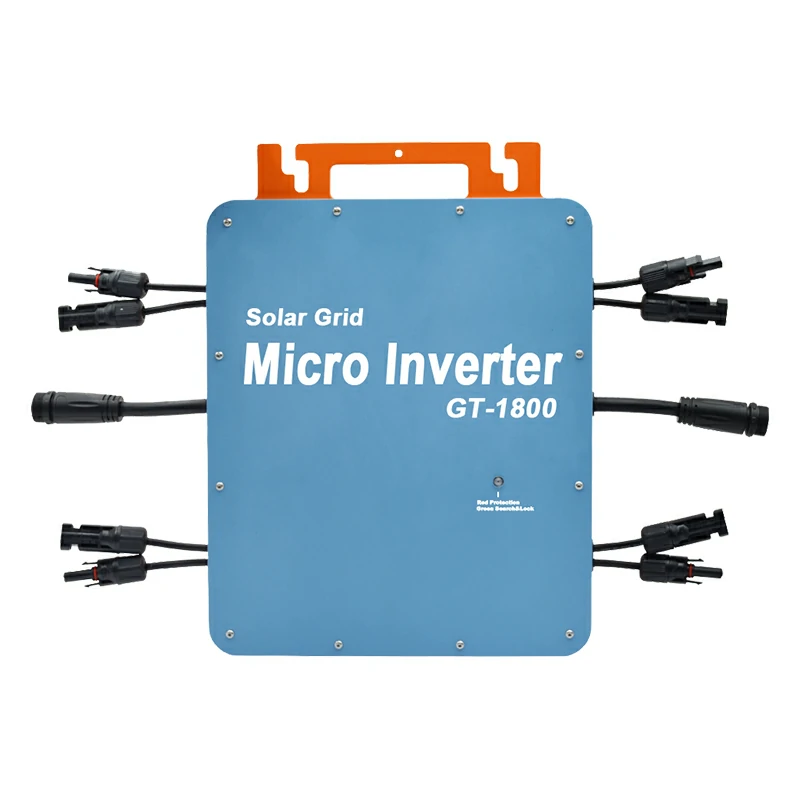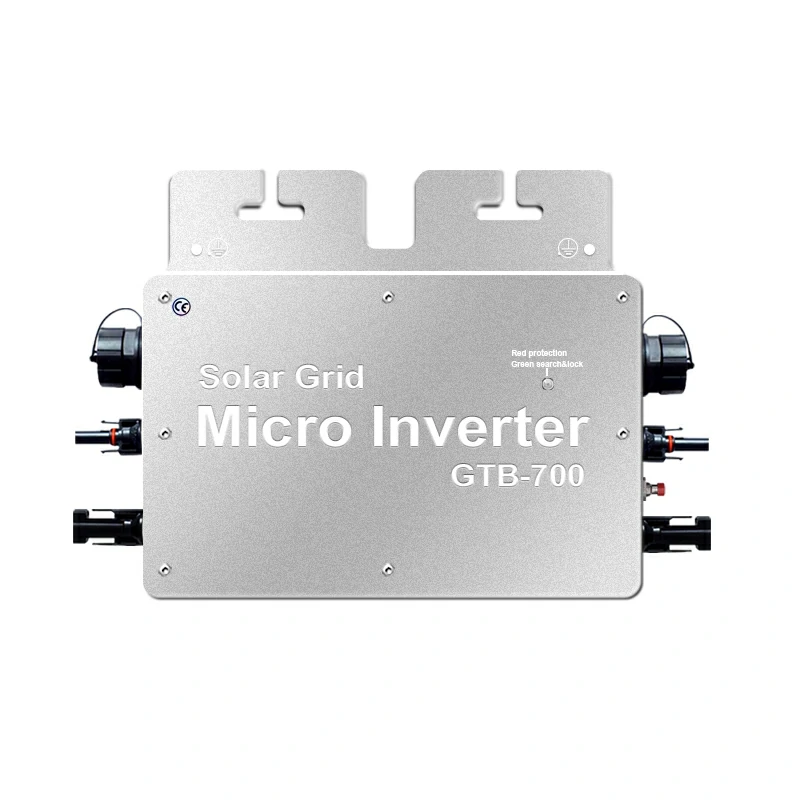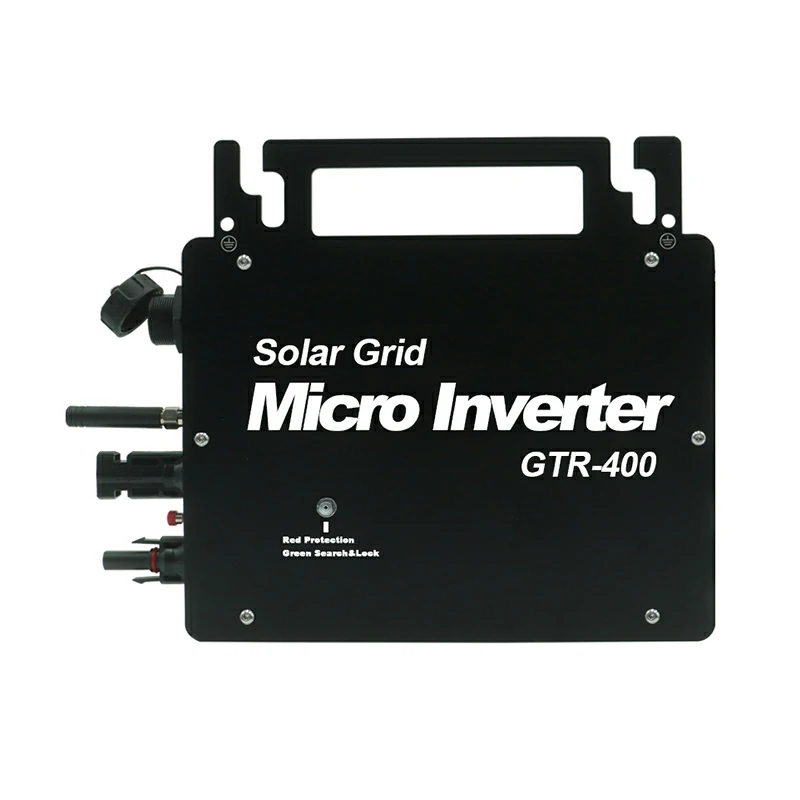Introduction
In the realm of solar energy systems, optimizing energy capture and conversion is paramount. Solar panels, essential for harnessing solar power, rely on inverters to convert the direct current (DC) generated into usable alternating current (AC). Among the various types of inverters available, microinverters have gained popularity for their efficiency and effectiveness. This article explores how microinverters work with solar panels, providing valuable insights for those considering the purchase of microinverters.

What is a Microinverter?
Microinverters are specialized devices designed to convert DC power generated by individual solar panels into AC power. Unlike traditional string inverters that handle the output of multiple panels simultaneously, microinverters are installed on each panel separately. This approach ensures that each panel operates independently, maximizing overall system performance and efficiency.
Comparison with Traditional String Inverters
Traditional string inverters are connected to a series of solar panels (a string), and any issue with one panel can affect the performance of the entire string. In contrast, microinverters isolate each panel, meaning that a problem with one panel has minimal impact on the others. This setup can significantly enhance the energy yield and reliability of a solar power system.
How Microinverters Work
Microinverters play a crucial role in converting the DC power produced by solar panels into AC power suitable for use in homes and businesses. Here’s a closer look at their operation:
Conversion Process
Each microinverter is attached to a single solar panel and performs the DC to AC conversion right at the source. This localized conversion reduces energy losses typically associated with long DC wiring runs to a central inverter. By converting the power at the panel level, microinverters optimize the efficiency of each panel, leading to improved overall system performance.
System Integration
Microinverters are installed either on the back of each solar panel or on a nearby mounting structure. They are connected to the solar panels and the electrical grid through a network of cables. Modern microinverters also communicate with each other and the system’s monitoring software, providing real-time data on the performance of each panel.
Benefits of Microinverters
Microinverters offer several advantages over traditional string inverters, enhancing both performance and reliability in solar energy systems.
Enhanced Energy Harvesting
One of the primary benefits of microinverters is their ability to optimize energy production from each solar panel individually. Unlike string inverters, which can suffer from decreased efficiency due to shading or panel mismatches, microinverters ensure that each panel operates at its maximum potential. This results in higher overall energy yield, especially in scenarios where some panels are shaded or have varying levels of performance.
Improved System Performance
Microinverters are particularly effective in situations where partial shading or panel mismatch occurs. In a string inverter system, shading on one panel can significantly reduce the output of the entire string. With microinverters, each panel functions independently, so shading or dirt on one panel has minimal effect on the others. This ensures more consistent and reliable energy production throughout the day.
Increased Reliability and Safety
Microinverters also offer enhanced system reliability and safety compared to traditional inverters. Since they convert DC to AC at the panel level, there are shorter DC wire runs, which reduces the risk of electrical hazards. Additionally, with microinverters installed on each panel, the system remains operational even if one microinverter fails. This design increases the overall resilience of the solar power system.
Installation and Maintenance
Installation Process
The installation of microinverters involves mounting each unit on or near the solar panels. This process requires careful planning and professional installation to ensure optimal performance and safety. It’s crucial to select a qualified installer who is experienced with microinverter systems to guarantee a smooth installation process.
Maintenance and Troubleshooting
Microinverters generally require minimal maintenance. However, periodic inspections are recommended to ensure that all units are functioning correctly. The integrated monitoring systems provided by many microinverters allow for easy tracking of performance and quick identification of any issues. This feature simplifies troubleshooting and ensures that any potential problems are addressed promptly.
Cost Considerations
Initial Investment vs. Long-Term Savings
While microinverters typically involve a higher initial investment compared to string inverters, they offer substantial long-term savings. The increased efficiency and reduced impact of shading can lead to higher energy production and lower electricity bills. Over time, the benefits of enhanced performance and reliability often outweigh the upfront costs.
Return on Investment (ROI)
The return on investment for microinverters can be significant, particularly in areas with variable weather conditions or partial shading. By maximizing the energy output of each panel, microinverters can improve the overall ROI of a solar power system. It’s important to consider both the financial and performance benefits when evaluating the value of microinverters.
Choosing the Right Microinverter
Key Features to Consider
When selecting microinverters, consider key features such as compatibility with your solar panels, efficiency ratings, and warranty terms. It’s also important to choose products that offer advanced monitoring capabilities for tracking system performance.
Compatibility with Solar Panels
Ensure that the microinverters you select are compatible with the specific models and configurations of your solar panels. Proper compatibility is essential for optimal performance and efficiency.
Conclusion
Microinverters provide a sophisticated solution for optimizing solar power systems, offering enhanced energy harvesting, improved performance, and increased reliability. For those considering the purchase of microinverters, understanding how they work and their benefits can guide you in making an informed decision. By selecting a reputable microinverters manufacturer and supplier, you can ensure that your solar power system operates at its highest potential.




